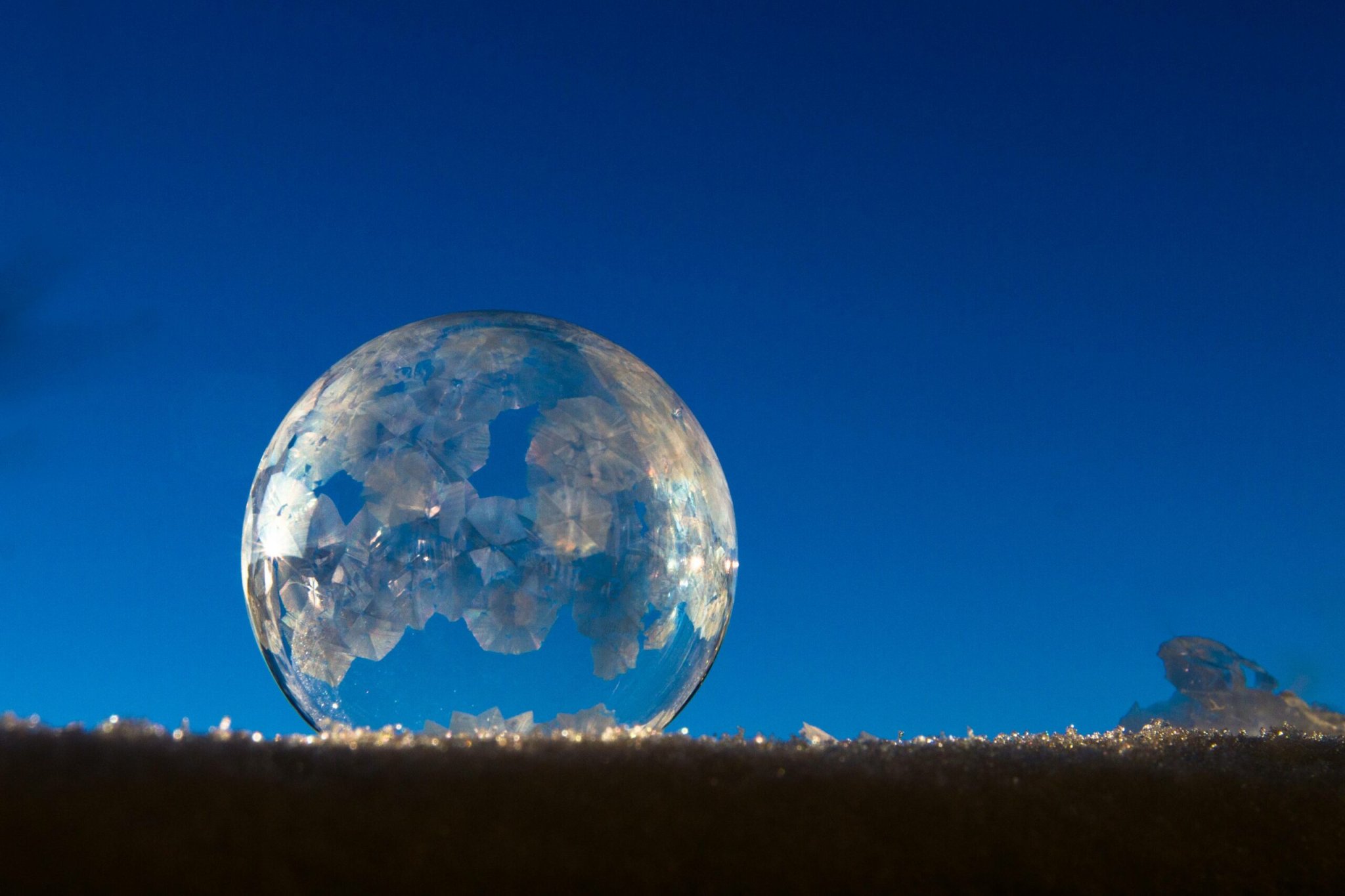

Whether this year brings another snowpocalypse, it’s time to remind you that some truly wondrous things can come out of bad weather. For photographer Chris Ratzlaff, it’s the opportunity to freeze soap bubbles. While it takes some practice, anyone can recreate the jaw-dropping effect at home—so long as “home” happens to be somewhere very, very cold.

A storm chaser by trade, Ratzlaff has been perfecting the art of bubble freezing for years. “Bubbles are such ephemeral things,” he says. “To be able to literally freeze them in time is such a rare experience.”
There’s some interesting science at play here. Every bubble is made up of three individual layers: a thin layer of water molecules squished between two layers of soap. It might look like the entire surface of the bubble is freezing, but what you’re actually seeing is the innermost layer of water—which freezes at warmer temperatures than soapy water—turning to ice within the film.

Unfortunately, the frozen bubbles don’t last long. As ice crystals form in the bubble’s surface, something else forms along with them: cracks. This means that any air trapped inside the sphere suddenly has an escape route. As air molecules diffuse through the tiny cracks between ice crystals, the sudden drop in internal pressure causes the bubble to implode, crushed by the force of the atmosphere.
Before the bubbles pop, Ratzlaff takes photos and videos of the freezing process. “Watching the ice crystals dance across the surface of the bubble as they freeze is mesmerizing,” he says. “When you photograph them, they look like tiny little planets. It fires the imagination.”

You can replicate Ratzlaff’s work by following the instructions below. (If you do, please send photos and videos to manual@popsci.com). But before you run out to buy materials, check the outdoor temperature: Because soap is a great insulator, this trick works best when it’s colder than -13 degrees Fahrenheit (-25 degrees Celsius). We weren’t kidding when we said “very, very cold”!

Stats
- Time: 2 hours
- Material cost: $10
- Difficulty: easy/moderate
Materials
- 200 milliliters of warm water (for freezing)
- 35 milliliters of corn syrup (for thickness)
- 35 milliliters of dish soap (for bubbles)
- 2 tablespoons of sugar (for crystallization)
Tools
- A bowl and spoon
- A plastic straw
- (Optional) a squeezable bottle
Instructions
1. Mix the liquids and sugar in a small bowl. Then, store it in the freezer. Lowering the mixture’s temperature will help your bubbles freeze faster when they land. After 30 minutes, take the bowl out and give its contents another stir.
2. Find a cold, textured surface to stick your bubbles. Ready, aim, and fire! Blowing bubbles with a straw rather than a store-bought dipstick will create less sticky, frozen mess.
3. (Optional) If you really want to go for it, you can rig the straw to a squeezable bottle (see Ratzlaff’s version above). The breath you exhale will be much warmer than the ambient air inside the bottle, so this method can help keep your bubble mix cold as it floats to its final resting place.
4. Be patient. “Even with the perfect formula, many bubbles will pop before you’ll have one that freezes for you,” says Ratzlaff. “The slightest breeze can pop them.”
